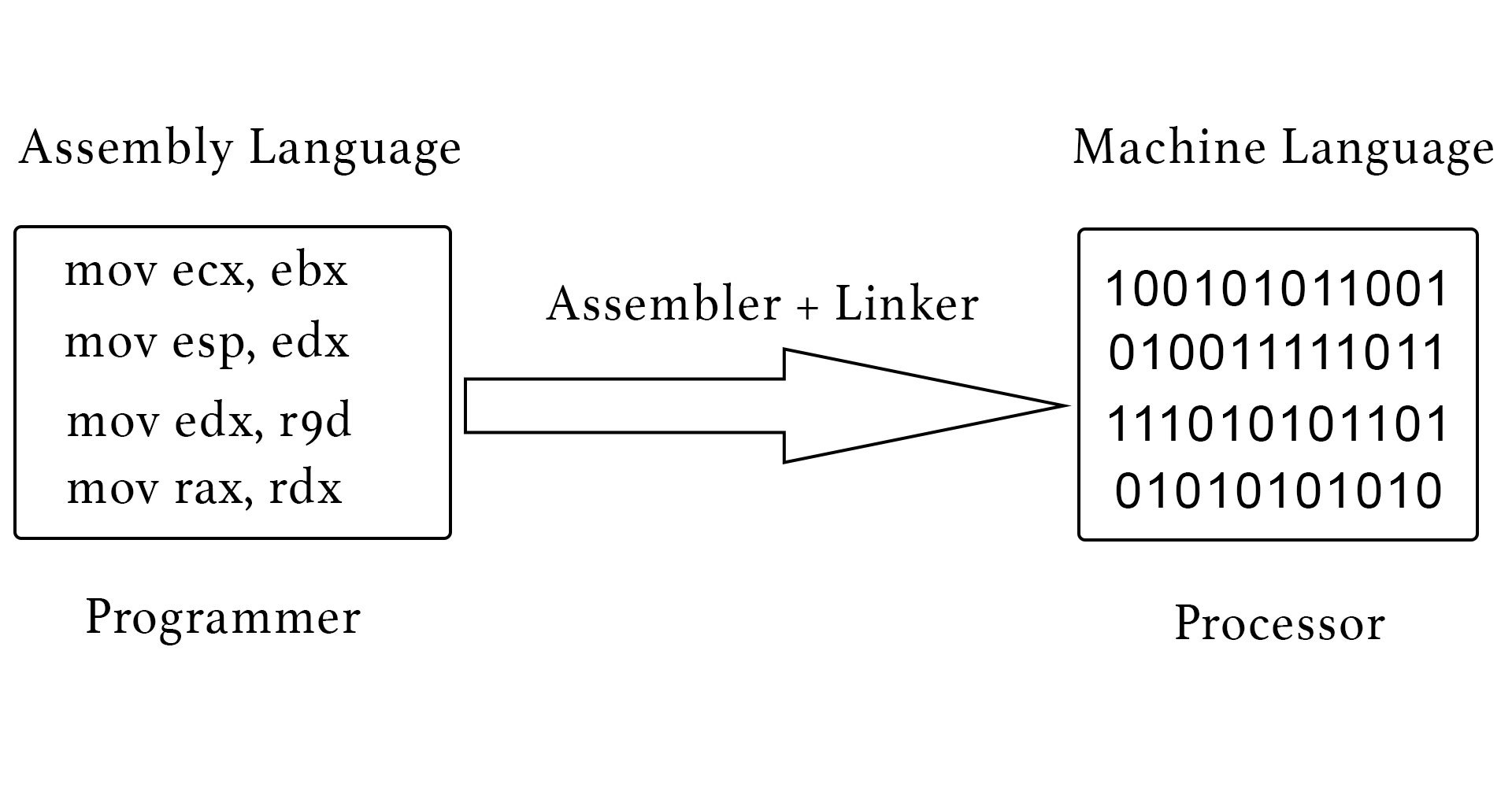When people talk about assembly language in New York, NY, they're often diving into one of the most foundational layers of computer programming. Whether you're a student just starting out or a seasoned developer brushing up on low-level code, knowing how assembly works can give you a unique edge in understanding how software really runs at the machine level. In a city like New York, where tech innovation moves fast, having that deep knowledge could be a real game changer.
Assembly language isn't just for old-school coders or academic types. It's still widely used in embedded systems, reverse engineering, and performance-critical applications. If you're trying to debug something deep in the stack or optimize a tricky part of your code, knowing how to read and write assembly can really help you out. Plus, with so many bootcamps and coding schools in New York, there's a growing interest in low-level languages like assembly, especially among those wanting to dive into systems programming or cybersecurity.
For developers in New York, understanding assembly also ties into broader trends like low-level performance tuning, working with hardware, and even ethical hacking. Whether you're working on a startup project or part of a larger tech team, knowing how your code translates into actual machine instructions can make a big difference in how you approach problem-solving. So, if you've ever asked, “What does this actually do at the CPU level?” you're probably already on the path to learning assembly.
- I Accidentally Stole The Bad Boys Kiss
- Ivy Rehab Physical Therapy
- Javiers Restaurant Newport Beach Photos
- Anya Taylor Joy Naked
- Chambers Bay Golf Course
Table of Contents
- What Is Assembly Language?
- Why Assembly Matters in New York
- Writing and Compiling Assembly Code
- Common Challenges and How to Solve Them
- FAQ Section
What Is Assembly Language?
Assembly language is a low-level programming language that's closely related to machine code. Unlike high-level languages like Python or JavaScript, assembly gives you direct control over the hardware — like the CPU registers and memory addresses. Each assembly instruction typically maps to a single machine instruction, which makes it super powerful — but also a bit tricky to work with.
In assembly, you're not dealing with abstract data types or garbage collection. Instead, you're working with things like registers, flags, and memory pointers. For example, in x86 assembly, you might see instructions like mov, add, or cmp, which move data, perform arithmetic, or compare values. These operations directly influence how the CPU behaves, which is super useful when you're trying to optimize performance or understand how higher-level code is executed behind the scenes.
One thing to keep in mind is that assembly language varies depending on the processor architecture. So, the code you'd write for an x86 CPU isn't the same as what you'd use for an ARM-based system. That’s why developers in New York working with embedded systems or mobile apps often need to learn multiple assembly dialects, depending on the target platform.
- Newport On The Levee
- Olivian At The Realm
- How To Unfollow On Instagram
- Body Pole Nyc
- Jw Marriott Savannah Plant Riverside District
Why Assembly Matters in New York
New York is home to a huge tech ecosystem, from fintech startups to major software companies. In a city that runs on fast-moving tech, knowing assembly can really set you apart. For example, cybersecurity professionals often use assembly to analyze malware or reverse engineer software. Similarly, developers working on performance-critical applications — like high-frequency trading platforms — might use assembly to squeeze the last bit of speed out of their code.
If you're trying to get into systems programming, embedded development, or even operating system design, having a solid grasp of assembly is pretty much a must. In fact, a lot of top-tier coding bootcamps and universities in New York include assembly as part of their curriculum, especially for students focusing on low-level development or reverse engineering.
Another reason assembly is relevant in New York is the rise of IoT (Internet of Things) and edge computing. These fields often require developers to work directly with hardware, and that usually means working in assembly or C. Whether you're building a smart thermostat or a custom sensor, knowing how to interact with memory and registers at the lowest level can help you write more efficient and reliable code.
Writing and Compiling Assembly Code
Writing assembly code can feel a bit intimidating at first, especially if you're used to higher-level languages. But once you get the hang of it, it’s actually pretty straightforward. Most developers in New York who work with assembly use tools like NASM (Netwide Assembler) or GAS (GNU Assembler) to write and compile their code.
Here’s a quick example of how you might write a simple “Hello, World!” program in x86 assembly using NASM:
- Write your code in a file called
hello.asm. - Assemble the code using the command
nasm -f elf hello.asm. - Link the object file with
gcc -m32 -o hello hello.o(if you're on a 64-bit system). - Run the executable with
./hello.
If you're just getting started, it’s a good idea to look up some tutorials or take a class. There are plenty of resources available online, and some local coding schools in New York offer hands-on workshops for learning assembly and related topics.
Common Challenges and How to Solve Them
One of the most common issues people run into when learning assembly is understanding how the stack works. The stack is crucial in assembly because it's used for function calls, local variables, and parameter passing. If you're not careful, it's easy to mess up the stack and crash your program.
Another issue is dealing with conditional jumps like je and jz. If you’ve ever wondered, “Are je and jne exactly the same as jz and jnz?” — the answer is yes, in most cases. These instructions are basically synonyms that depend on which flag is being checked. For example, je (jump if equal) is the same as jz (jump if zero), because the zero flag is set when two values are equal after a comparison.
If you're working with assembly in a Windows environment, you might also run into issues with compiling and linking. Some people try using NASM but can't get anything to run. In that case, it’s a good idea to double-check your syntax, make sure you're using the right calling conventions, and verify that your linker is set up properly.
For those working with higher-level languages that interface with assembly, like C++ or C#, understanding how to reference external assemblies or debug low-level code can be tricky. A lot of developers in New York use tools like WinDbg or GDB to step through assembly instructions and see exactly what’s happening under the hood.
FAQ Section
What is the difference between assembly code and machine code?
Assembly code is a human-readable version of machine code. Machine code consists of binary instructions that the CPU can execute directly. Assembly code uses mnemonics like mov or add to represent these binary instructions, making it easier for developers to read and write. An assembler then translates assembly code into machine code that the computer can run.
Can I write assembly code in Windows?
Yes, you can definitely write assembly code in Windows. Many developers use NASM or MASM (Microsoft Macro Assembler) along with a linker like gcc or Visual Studio's linker. You’ll need to make sure you’re using the right syntax and that your development environment is set up properly for assembly programming.
Why would someone use assembly instead of a higher-level language?
Assembly is used when you need direct control over hardware or want to optimize performance-critical code. It's commonly used in embedded systems, operating system development, reverse engineering, and low-level debugging. In New York, where performance and security are top priorities in many industries, knowing assembly can give you a solid advantage in certain technical roles.
One thing to keep in mind is that assembly doesn't have to be your main language. It’s often used in combination with higher-level languages to optimize specific parts of a program. For example, you might write most of your code in C but drop into assembly for a small section that needs to run as fast as possible.
For those looking to learn more about assembly language or get started with low-level programming, there are a lot of great resources out there. You can find tutorials, books, and even local meetups in New York where developers share tips and tricks. If you're just starting out, it’s a good idea to begin with x86 assembly since it's widely used and well-documented.
Check out some of the online courses or local workshops to get hands-on experience. Learn more about learning assembly on our site, and link to this page for a deeper dive into real-world applications and examples.
- Plano West Senior High
- The Lab Anti Mall
- Hilton Cincinnati Netherland Plaza
- Javiers Restaurant Newport Beach Photos
- Gotham Gym New York



Detail Author:
- Name : Manley Cummings
- Username : mwolf
- Email : nbartell@dibbert.org
- Birthdate : 1988-06-11
- Address : 82267 Gerhold Wall East Godfrey, MI 10845-4996
- Phone : (707) 528-2645
- Company : Kessler-Weissnat
- Job : Cartoonist
- Bio : Sit maxime quidem hic assumenda. Mollitia aspernatur veniam adipisci. Dignissimos et saepe autem sint.
Socials
tiktok:
- url : https://tiktok.com/@hilma_official
- username : hilma_official
- bio : Eos et dicta possimus unde est praesentium nemo.
- followers : 5878
- following : 1893
twitter:
- url : https://twitter.com/hilma.murphy
- username : hilma.murphy
- bio : At rerum repellat non expedita vel autem et suscipit. Optio maxime voluptas sit doloribus dolores. Quis accusantium porro ut vero ratione voluptates.
- followers : 1027
- following : 1363
linkedin:
- url : https://linkedin.com/in/hilma4301
- username : hilma4301
- bio : Repellendus dolorum non consectetur doloribus.
- followers : 3223
- following : 2408

